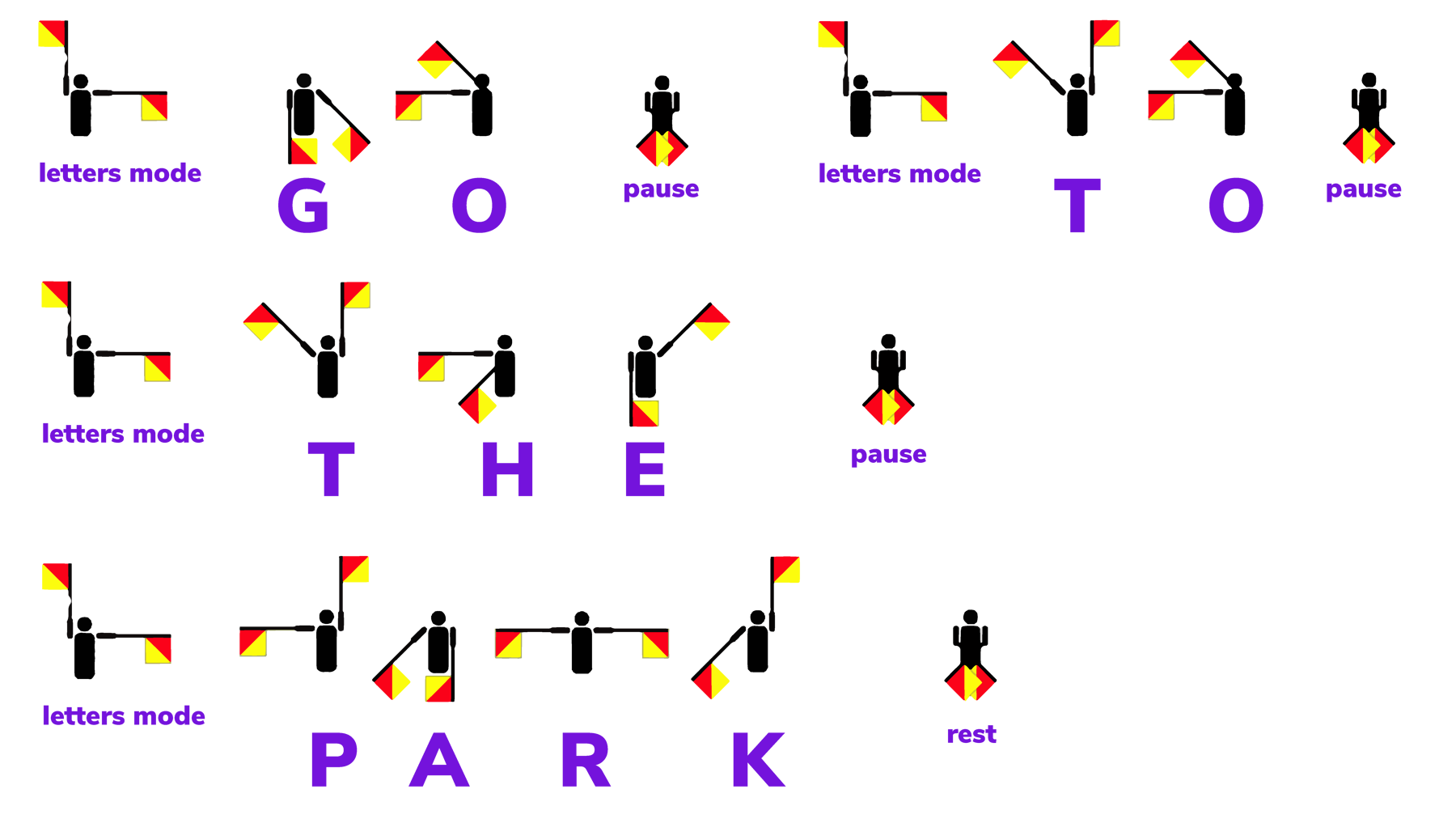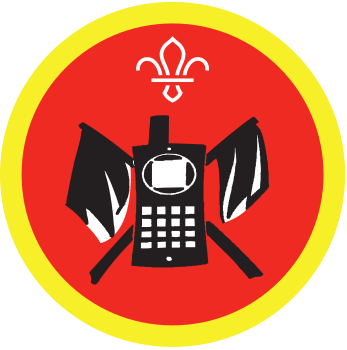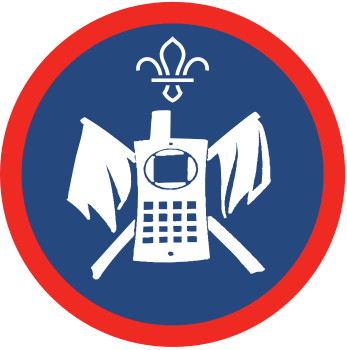The road to the code
You’ll need
- A4 paper
- Pens or pencils
- Oscillator (such as the one made in 'Destination oscillation')
- Semaphore flags (or red and yellow card)
- Map of the local area
- Sticky tape (optional)
- Torch (optional)
Before you begin
There are lots of communication methods across the world and they are used for many different reasons. Semaphore using handheld flags (like in this activity) originated around 1860, but other semaphore systems have been used since ancient times! Morse code has been used since the 1830s. Both have been used to pass messages to another place or person in a way that not everyone understands.
This activity gives everybody the opportunity to learn Semaphore or Morse code by following trails set out in their local area. The trails only use the chosen communication method of the team and lead people to different locations before returning to the meeting place to decipher and communicate a sentence or phrase to another team.
- Plan out how many Morse code and Semaphore trails you’ll need for this activity, based on the number of people in your group. Each trail should only use one of the communication methods. Large groups may like to have multiple smaller teams tackling either Morse code or Semaphore, while in smaller groups it’s probably easier to split into two teams and have one try each.
- Create two Semaphore flags each for the teams completing the Semaphore trails.
How to make them can be found on the ‘Semaphore signals’ sheet. If there is time, teams could create them in the session, before heading out.
- Source an oscillator for every team completing the Morse code trail.
If this is not possible, consider completing the Destination Oscillation activity before this to give everyone the opportunity to build a simple oscillator.
Set a trail
- Plot a trail for each team. Each team should visit six different locations on their trail. Teams may visit the same location, but only at different times. Use the map to help. Once the trails are done, translate the name of each location into Semaphore or Morse code, depending on who’s going to be following it. Use the ‘Semaphore signals’ and ‘Morse code’ sheets to help.
If you do this on a computer with web access, Morse code and Semaphore can be quickly translated at these linked websites.
- Create a sentence or phrase for each team, divide it up and write it on the back of their location sheets in English for them to collect on their way round
Each team will need to translate this sentence or phrase into either Semaphore or Morse code when they get back to the meeting place and communicate it to another team.
- Put the location sheets at their places in the local area before the meeting starts
Make sure the order is written down so there is no confusion when placing them out. Make note of any risks or hazards leaders and young people should be aware of while these are being put out.
Below are example trail sheets in Morse code and Semaphore to get you going:
The purple letters are for guidance only, and should not be included when making trail sheets for this adventure. Otherwise locations will be uncovered very quickly!


Explore and uncover
- Everyone should get into their groups. Make a final decision on who’ll be using Morse code and who’ll be using Semaphore. Give the Morse code teams their help sheet and the Semaphore teams theirs. Let each team know which colour team they are, or how to recognise the bits of paper they need to collect.
- Give each team their location sheet. If anyone needs any help deciphering the code, they should be encouraged to ask for it now. Each team should then set off to the first location on their trail with their adult helper.
- When all of the teams return, they should have all their location sheets. Everyone should then use their help sheet to translate this sentence into Morse code or Semaphore (whichever one they’ve been using). Give out pens or paper where needed.
- Explain the correct sending and receiving procedures to all the teams to follow.
- Pair up teams who don’t share the same communication method and have them relay their message in Morse code of Semaphore. Make sure the team receiving and the team sending has the relevant help sheet. The receiving team should write down the message as they receive it.
- While teams are sending their messages, everyone else should be timing them. It should take no more than a minute to send five words.
Reflection
There are lots of communication methods across the world and they’re used for many different reasons. Both Semaphore and Morse code pass messages to another place or person in a way that not everyone understands. When or why might it have been important to send a secret message? What situations in Scouts can you think of where Semaphore or Morse code might come in handy?
Safety
All activities must be safely managed. You must complete a thorough risk assessment and take appropriate steps to reduce risk. Use the safety checklist to help you plan and risk assess your activity. Always get approval for the activity, and have suitable supervision and an InTouch process.
- Dark
Provide some light, so the environment isn’t completely dark. Everyone must be able to see others and move around the area safely.
- Hiking and walking
Follow the guidance for activities in Terrain Zero, or the guidance for each the adventurous activity.
- Outdoor activities
You must have permission to use the location. Always check the weather forecast, and inform parents and carers of any change in venue.
- Road safety
Manage groups carefully when near or on roads. Consider adult supervision and additional equipment (such as lights and high visibility clothing) in your risk assessment.
- Snow and ice
Be careful when activities involve snow and ice. Check surfaces and reduce the risk of slipping where possible. Have appropriate supervision for this activity.
For savvy map-readers, make this tougher by having the location sheets spell out a six-figure grid reference, rather than a place name. Decrease the number of locations to make this simpler.
Bring a torch if you’re going out in the dark.
Try to keep all the trails on suitable terrain.
All Scout activities should be inclusive and accessible.
Try this somewhere new to see if these skills can help everyone get to know a different place.
Teams can think up the phrase or sentence for others to find, and could even devise one another’s trails. Check these to make sure they’re suitable!

